
Remodeling your kitchen can be an exciting yet daunting process, especially when it comes to determining a realistic budget. The cost of a kitchen remodel can vary greatly depending on factors such as the size of your kitchen, the materials you choose, and your desired outcome.
It’s essential to consider first what changes you wish to make and prioritize them based on your needs and preferences. That will help you plan effectively and ensure that you allocate your budget wisely. One of the key factors in determining your budget is understanding the cost breakdown of various aspects of a kitchen remodel. That may include labor, materials, appliances, cabinetry, and more expenses.
By researching and gathering quotes from different San Diego Kitchen Remodel contractors, you can better understand the current market prices and tailor your budget accordingly. Additionally, considering various funding options and potential return on investment can further assist you in making informed decisions throughout the remodeling process.
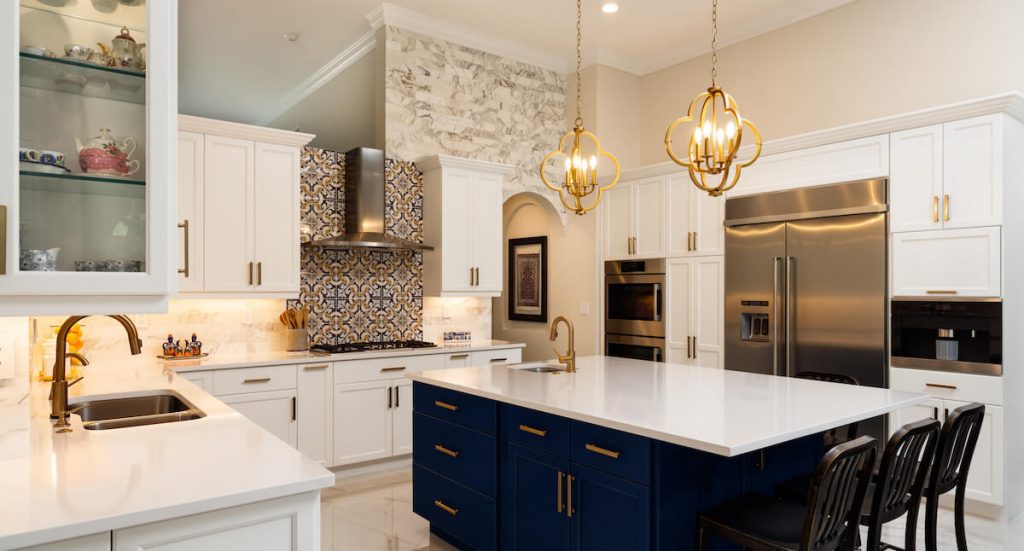
When planning a kitchen remodel, it’s crucial to establish a realistic budget. To do this, consider the overall value of your home, as experts recommend that a major remodel budget should be approximately 15-20% of your home’s value. For instance, if your home is worth $950,000, you should allocate between $142,500 and $190,000 for the remodel.
In determining your budget, you’ll want to consider the average cost of a kitchen remodel. According to Remodeling magazine’s 2023 cost vs. value report, a minor remodel could cost around $26,790, while a major renovation with luxury fixtures may reach up to $154,483. These figures can give you an idea of the expenses you should prepare for and help you set a reasonable range for your project.
As you research costs and budget, it’s essential to stick to the amount you’ve decided on to avoid breaking the bank. Keep in mind that a kitchen remodel can potentially see up to an 85% return on your investment, depending on the scope and quality of work.
To stay within your budget, consider exploring cost-saving measures. That could include reusing existing fixtures, choosing more affordable materials, or searching for discounts and promotions. Throughout the remodel, it’s essential to keep track of your expenses and make adjustments as needed to ensure you remain within your financial constraints.
During the remodeling process, timeframes can also impact your budget. Understand how long the project may take and be prepared for potential delays or complications that could arise. Proper planning and organization can help to mitigate additional costs and keep your project on track.
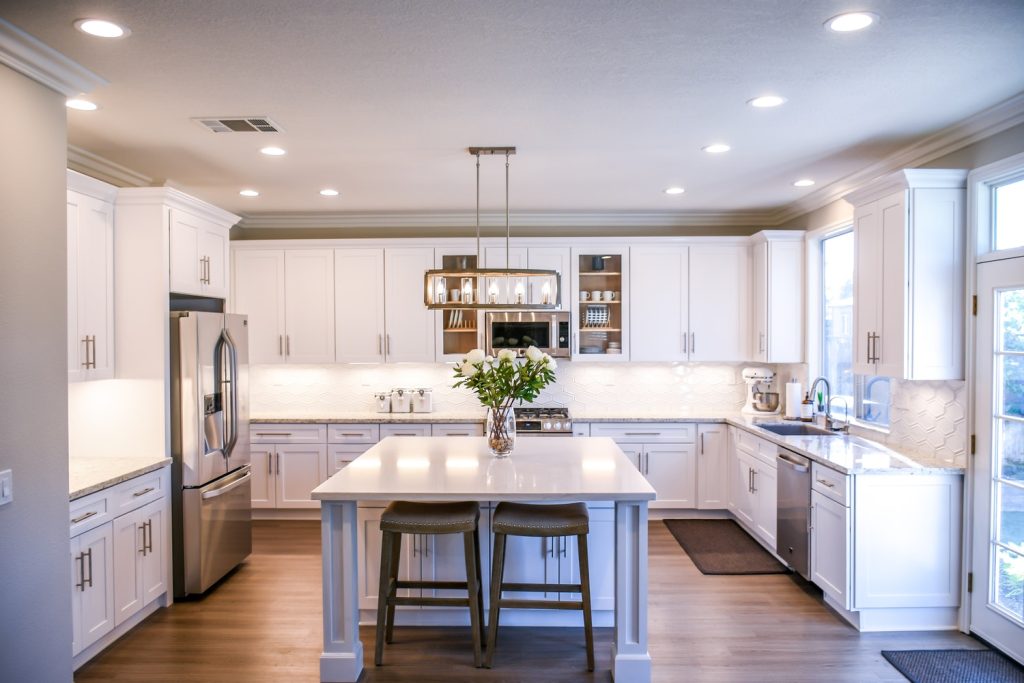
When remodeling your kitchen, one of the primary considerations is the cost of appliances. High-end appliances may offer better quality and durability, but you’ll need to evaluate whether the more expensive options are worth the price. Consider your usage patterns and preferences in selecting appliances that fit your needs and budget.
Kitchen cabinets can significantly impact the look and feel of your space. Two popular options for updating cabinets are refinishing and replacing. Refinishing involves updating the existing cabinet surfaces, while replacing consists of removing the old cabinets and installing new ones. Making this decision will depend on multiple factors, such as your existing cabinets’ condition and budget. Learn more about whether to refinish or replace kitchen cabinets.
Kitchen flooring should be durable and visually appealing while fitting within your budget. Common flooring options include hardwood, laminate, tile, and luxury vinyl. Each material comes with different price points and characteristics, such as durability and ease of cleaning. Select a flooring option that complements your kitchen style and meets your needs in terms of maintenance and cost.
Countertops are a central feature in any kitchen remodel. Materials like granite, marble, quartz, and laminate vary in cost and durability. High-quality countertop materials may require a higher budget, but they also provide increased durability and better aesthetics. Choose a countertop material that aligns with your design preferences, functionality requirements, and budget constraints.
The paint and wall treatments for your kitchen remodel will influence the overall look and mood of the space. Costs for this aspect can vary, depending on the paint quality and additional features like backsplash installation or custom wall treatments. Remember that labor and materials charges will also contribute to the total cost, so plan accordingly and factor these expenses into your budget.
Investing in high-quality fixtures and lighting is essential for creating a functional and visually appealing kitchen space. Factors affecting the price of fixtures include the quality, style, and installation requirements. Similarly, lighting choices can range from simple and low-cost options to more elaborate and expensive designs. Choose fixtures and lighting that complement your overall kitchen design and fit within your established budget.
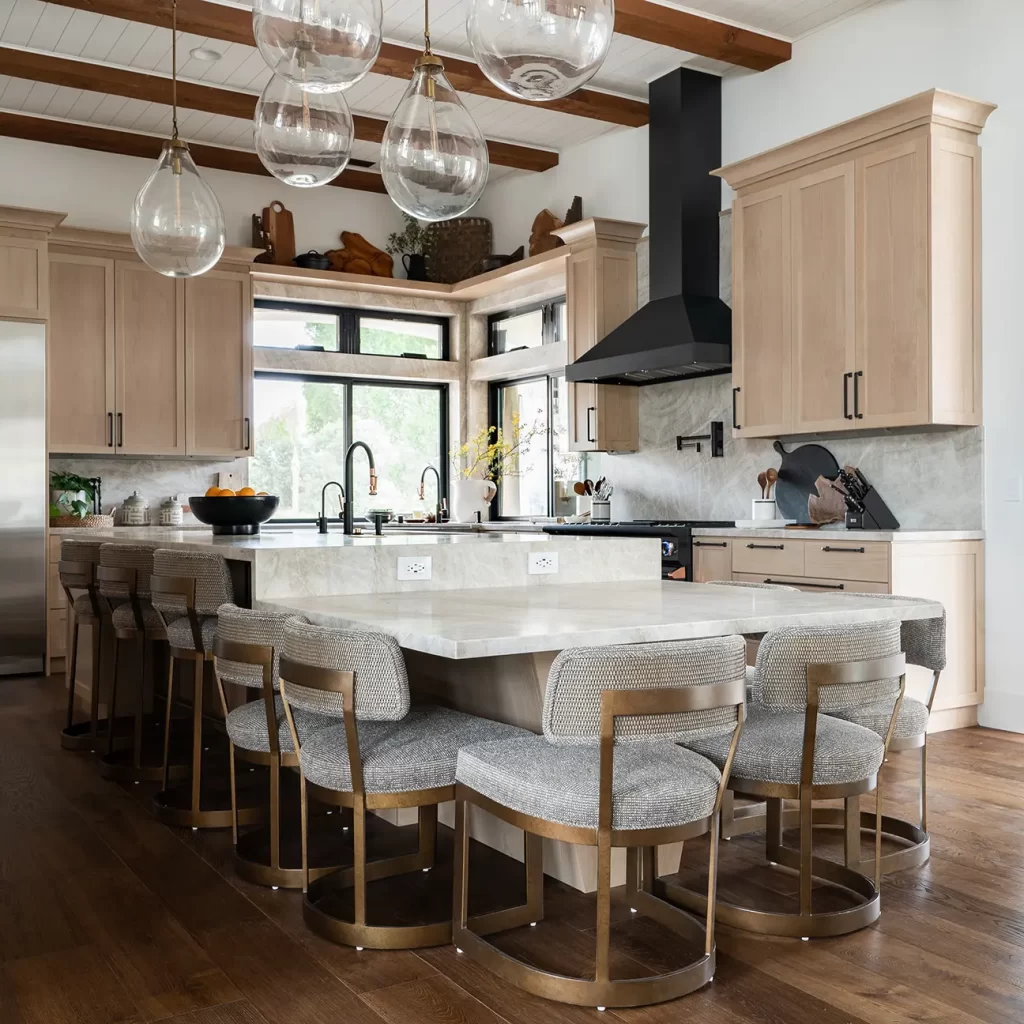
When planning a kitchen remodel, it’s essential to first establish the scope of your project. Consider the overall budget, available space, and desired functional aspects. Take the time to research modern appliance features, like those found in kitchen automation, to create a practical and stylish kitchen space.
While designing your new kitchen, think about how you want the space to flow and function. A well-planned kitchen should have a logical layout, ample storage, and easy access to essential appliances. Consider incorporating versatile elements, such as a kitchen island, which can serve multiple purposes, including meal prep, dining, and storage.
Feel free to explore different design styles to find the one that suits your preferences. You can use resources like a kitchen style guide to help determine the look and feel you’re aiming for — whether traditional, modern, or something in between.
Working with a professional designer can make a significant difference in style and functionality when it comes to kitchen remodeling. To ensure a successful project, choose a designer with experience and a proven remodeling process, such as the one offered by Kaminskiy Home Remodeling.
A skilled designer will listen to your needs, work within your budget, and help you create the kitchen of your dreams. Remember, investing time in the planning and design stages can save you money and stress in the long run.
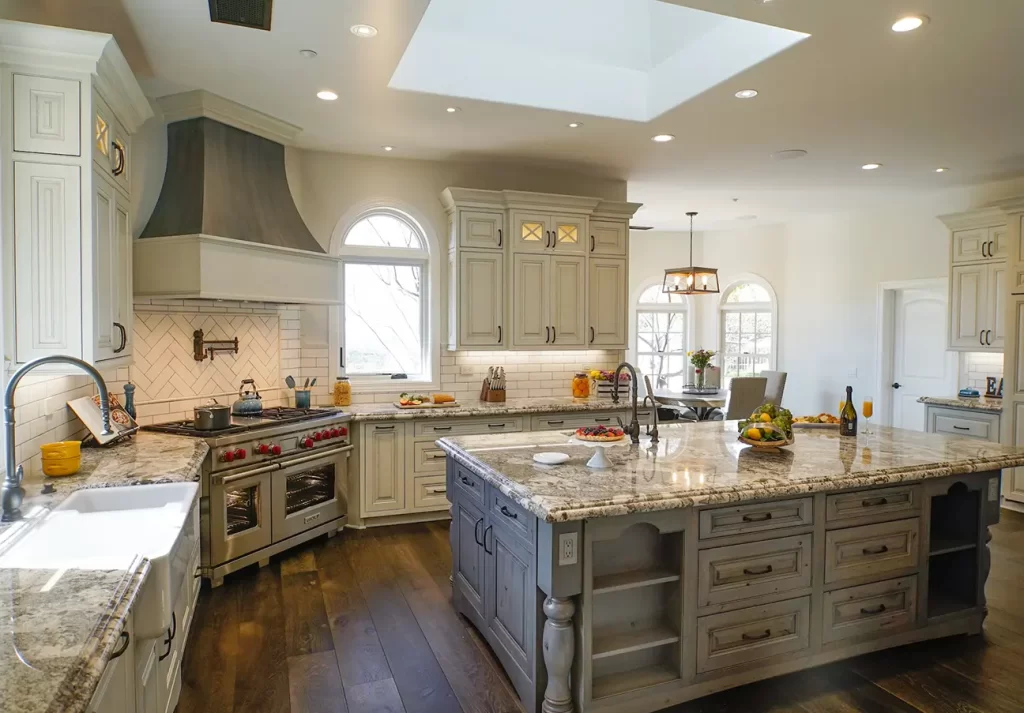
When planning a kitchen remodel, finding the right kitchen contractor is crucial for achieving your desired results. Begin by asking for recommendations from family and friends who have recently remodeled their kitchens. Research local contractors online, taking note of their reviews and previous work portfolios.
Once you have a list of potential contractors, it’s time to evaluate them based on their qualifications. Set up meetings with each contractor to discuss your project and ask for references from their past clients. Make sure to verify their license, insurance, and membership in professional associations. Remember to compare their estimates and the scope of work they are offering.
After evaluating your options, hire a professional contractor who meets your requirements and offers the best value for your money. Remember to create a detailed contract that outlines the scope of work, timeline, payment terms, and warranty information. That will help protect you and ensure your kitchen remodel is completed satisfactorily.
Remember, a successful kitchen remodel depends on hiring the right contractor. So, take your time and follow these steps to find the best professional for your project.
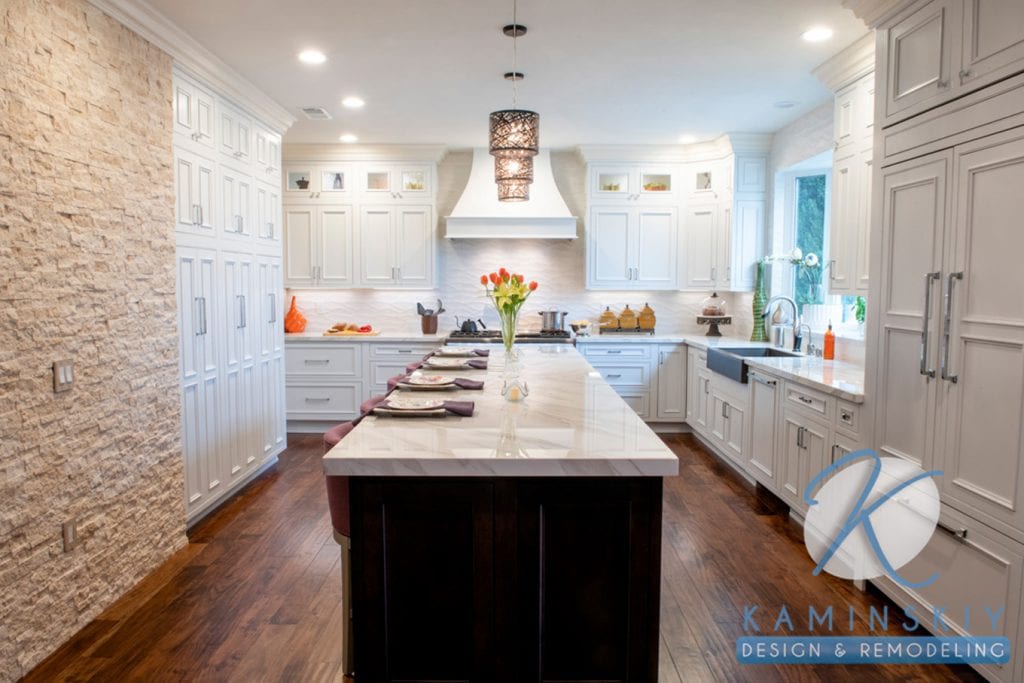
When planning a kitchen remodel, it’s essential to consider the return on investment (ROI). The ROI is crucial in determining whether investing in a remodel is financially beneficial and how it may impact your home’s resale value. Balancing the remodel’s cost with its potential impact on your home’s value is crucial to achieving an optimal return.
According to the National Kitchen and Bath Association, allocating 15-20% of the value of your home for a kitchen remodel is a good rate of return. However, the exact percentage can vary depending on factors such as your neighborhood, how dated your existing kitchen is, and the type of renovation you’re looking to undertake.
The 2023 Cost vs. Value Report indicates that a midrange minor kitchen remodel has an average ROI of 85.7%. This type of remodeling may include updating cabinetry, installing energy-efficient appliances, and painting walls, floors, and ceilings. Midrange major remodels tend to have a lower ROI, 41.8%, as the project’s cost increases, but they can still be a wise investment if your kitchen is extremely outdated or dysfunctional.
Keep in mind that it’s not always necessary to go for a full remodel to achieve a high return on investment. In many cases, giving your kitchen a mini face-lift with targeted improvements like repainting or replacing countertops can significantly increase your home’s resale value without breaking the bank.
In summary, it’s crucial to approach your kitchen remodel with a clear understanding of your budget, your home’s value, and the potential return on investment. By planning your project carefully and considering the recommendations mentioned above, you can maximize your ROI and enhance your home’s resale value.
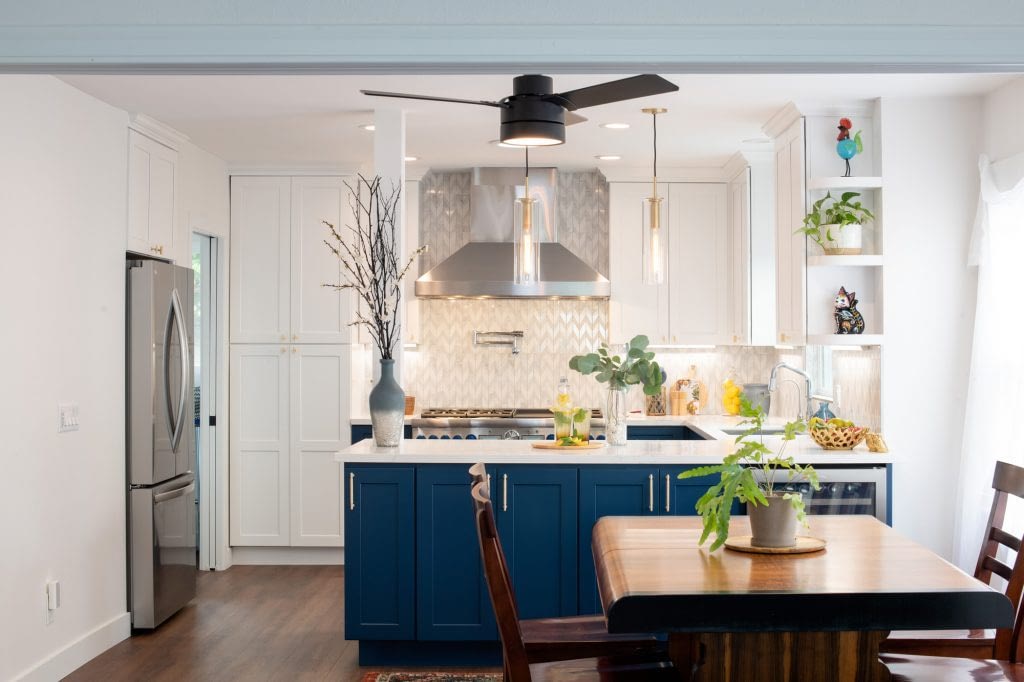
When planning a kitchen remodel, starting by determining your budget is essential. A good starting point is to follow the rule of thumb that your kitchen renovation should cost around 5-15% of your home’s value. Once you have a budget in mind, subtract 25% of it as a contingency for unexpected expenses.
For instance, if your house is valued at around $900,000, aim for a $45,000 to $135,000 remodel budget, considering the rule of thumb.
Here are some helpful budgeting tips to keep in mind:
It’s good to have a clear breakdown of your overall budget. Viewing detailed subtotals for each category allows you to make well-informed decisions as you design your space.
Are you planning a kitchen renovation? Get a detailed budget breakdown based on the National Kitchen & Bath Association (NKBA) guidelines. These percentages are trusted industry standards, ensuring you allocate your funds wisely. Try our calculator below to see how your renovation budget might be distributed!
Get a cost breakdown for your Kitchen Renovation Project.
Not Sure About These Numbers?
Consider financing options if you need more than your budget to cover your remodeling costs. There are numerous choices available, like home equity loans, personal loans, or home improvement loans. It’s crucial to weigh the pros and cons of each loan type and select one that fits your circumstances best.
A personal loan is an unsecured loan, meaning that it doesn’t require any collateral. You can use these funds to cover your remodeling costs. These loans usually have fixed interest rates and repayment terms. The benefits of a personal loan are faster approval times, no collateral requirement, and manageable monthly payments.
On the other hand, home equity loans are secured loans that rely on the borrower’s home as collateral. These loans typically have lower interest rates and longer repayment terms than personal loans. An advantage of home equity loans is that the interest paid on the loan may be tax-deductible (consult a tax professional for advice). However, the downfall is that if you’re unable to repay the loan, you risk losing your home.
In conclusion, take time to plan and carefully budget for your kitchen remodel. Consider various financing options or loans based on your financial situation. Remember, a well-thought-out approach can help you create the dream kitchen you’ve always wanted while keeping your finances in check.
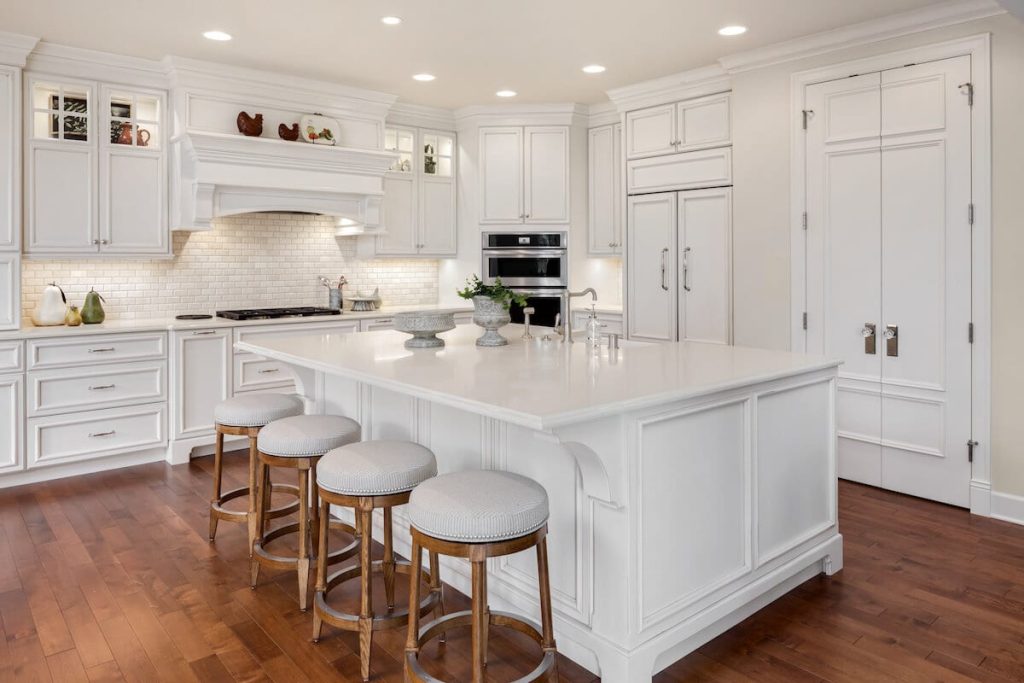
The cost of a kitchen remodel can vary widely based on many factors, but as a general guideline, you might expect the average cost per square foot to range between $100 and $250, or $150 per square foot on average. Keep in mind that this is just a ballpark figure and may change depending on the scope of your project and the materials chosen. It’s always a good idea to gather quotes from multiple contractors to better understand expenses for your specific area.
Several factors can affect your kitchen renovation costs, including your existing kitchen’s size, the materials selected, labor rates, and the overall design complexity. Other factors, such as the costs associated with plumbing, electrical, and gas work, should also be taken into account. Finally, project management and permitting fees may play a role in the overall cost.
The major expenses in a kitchen remodel generally include cabinetry, countertops, appliances, and labor costs. Other significant expenses involve electrical work, plumbing, flooring, and lighting. Depending on your materials and quality choices, these expenses can vary greatly.
Absolutely! We have a kitchen renovation cost calculator in this blog’s “Budgeting Tips” section. While this tool provides a great starting point based on the National Kitchen & Bath Association (NKBA) guidelines, consulting with a professional contractor or designer for a more tailored estimate is always a good idea. Additionally, considering a certain percentage of your home’s value as a baseline can further assist in setting your budget.
For budget-friendly kitchen remodel ideas, consider brightening up the space with a fresh coat of paint or updating hardware such as handles and knobs. Additionally, open shelving is cost-effective and stylish, while adding a new backsplash can create a stunning visual effect. Don’t overlook the potential impact of lighting updates. You can still create a beautiful and functional kitchen on a budget by selecting cost-effective materials and focusing on smaller details.

Jean Becker is an experienced and accomplished Interior Designer at Kaminskiy Design and Remodeling, with expertise in space planning, kitchen and bath design, and custom cabinetry. Her skills extend to remodels, additions, and ADUs, making her a key asset to the team. Beyond her design work, Jean enjoys writing about the latest trends and sharing innovative ideas in the design and remodeling industry.